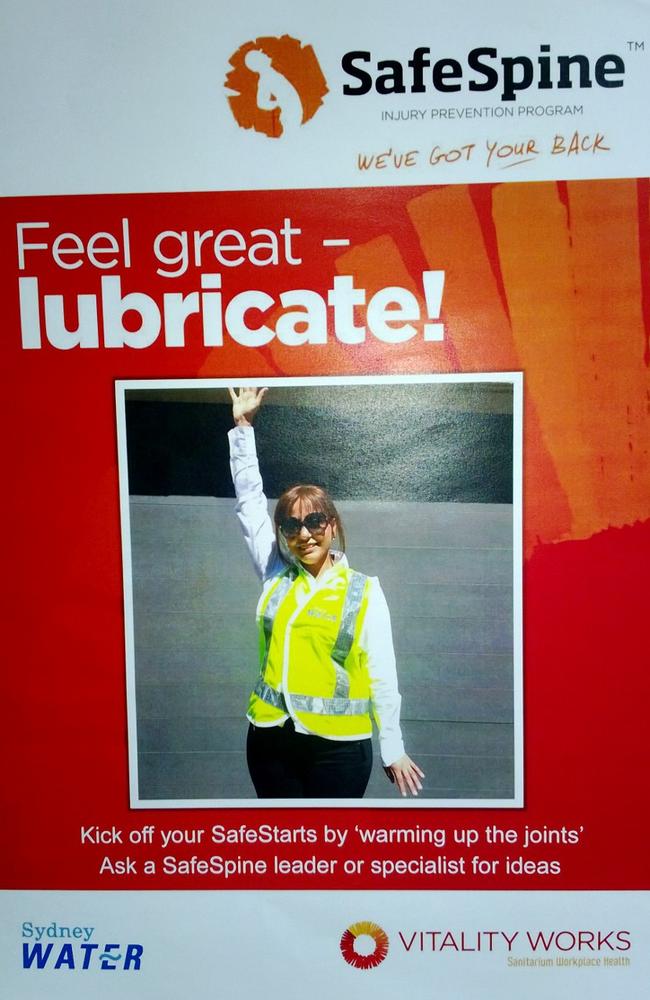A recent sexual harassment lawsuit involving a woman whose portrait appeared in a workplace poster has given workplaces, and pro photographers, a $200K reason to always secure appropriate model release forms.

While the case doesn’t involve professional photographers, it shows how cutting corners and failing to gain appropriate permissions when using an image of someone in a public campaign can have costly legal ramifications.
In 2015 a former Sydney Water employee, Reem Yelda, agreed to have her image appear in a safety poster raising awareness for injury. Sydney Water had Vitality Works Australia, a workplace health consultancy firm, produce the poster.
The poster was part of the SpineSafe campaign, and included Yelda’s image with the tag line, ‘Feel great – lubricate!’, which the courts determined had a sexual ‘double-meaning’. (The court papers rather amusingly explain in ‘legalese’ how the tagline can be interpreted in a sexual way, but we trust Inside Imaging readers have it figured out)
According to court papers, Yelda provided verbal consent but was ‘humiliated’ when she discovered the sexual nature of the poster, which appeared at the Sydney Water Ryde depot in 2016 outside the men’s toilets.
‘Whilst Ms Yelda agreed to have her photograph taken, she did not consent to the final form of the Poster and, in particular, the text that appeared above it with the word “lubricate”,’ court papers state. ‘She says that she was embarrassed, upset, affronted, offended and humiliated by the final form of the Poster and the fact that it appeared at the workplace in a prominent location and in a prominent way.’
Yelda’s photo was shot by a Vitality Works employee, and not a professional photographer, and the employee who made the poster was filling in for the usual designer. It may have been an effort to cut costs, but in hindsight it would have been much cheaper to hire a photographer, model, and design agency to put everything together. An experienced photographer would also have the photography subject sign a model release form, which could have avoided legal liability by providing appropriate usage consent.
It’s not uncommon for photography subjects to become surprised with where their image turns up. Last year an American photographer was devastated after an image she uploaded to free image stock agency, Unsplash, of a young ballet dancer was used by a UK government agency to promote re-training out of the creative arts.
While Vitality Works had produced several other posters with male subjects for the SpineSafe campaign, Yelda’s image was the only one with with a woman and ‘sexual’ innuendo. The others had taglines like ‘Keep your joints lubricated to avoid wear and tear’. Yelda told the court she received comments from co-workers regarding the sexual nature of the poster, and a co-worker who testified said she built a strong rapport in the male-dominated workplace and became concerned about losing respect.
Yelda filed a lawsuit in 2020 against both Sydney Water and Vitality Works for sexual harassment, and the NSW Civil and Administrative Tribunal ordered both companies to pay $100K each, the full statutory monetary limit on damages.
Vitality Works appealed the decision, but in July 2021 the NSW Court of Appeal upheld the order to pay $100K in compensation.





Having a model release doesn’t allow you to denigrate or demean a person without their knowledge.
In this case a model release wouldn’t have saved them.